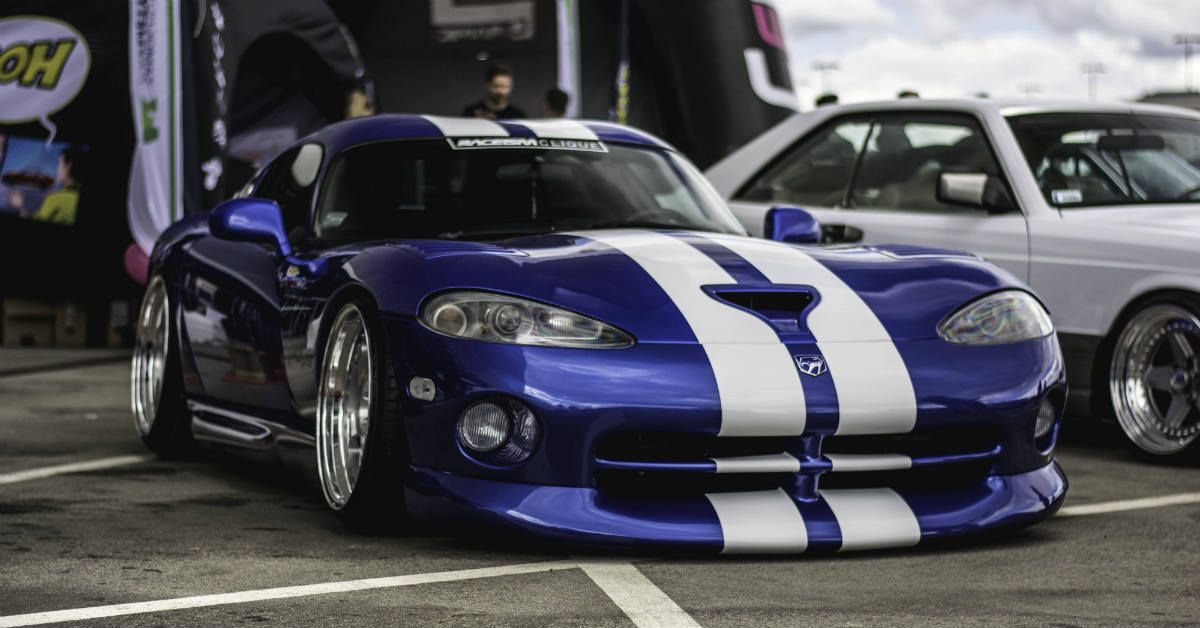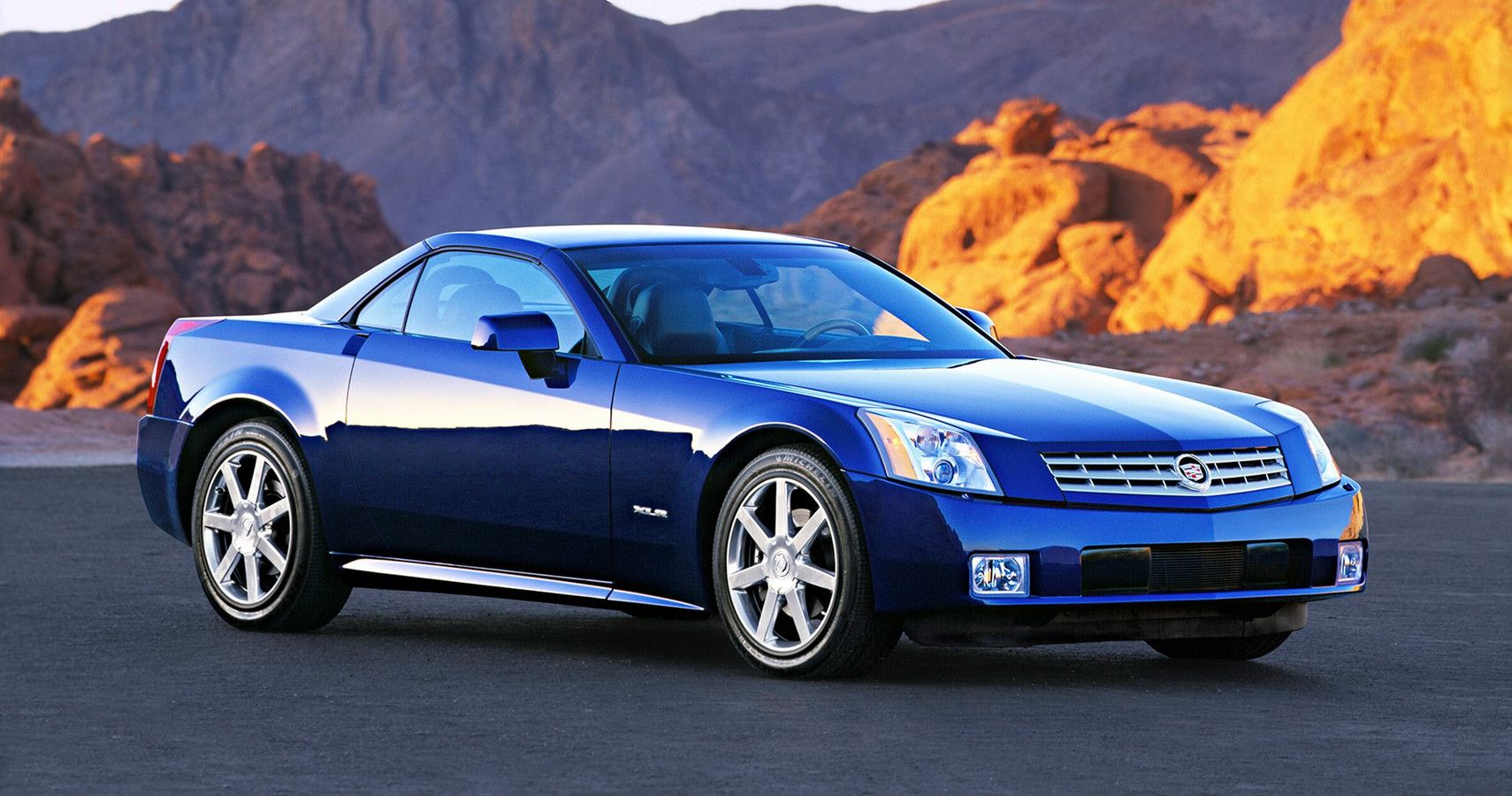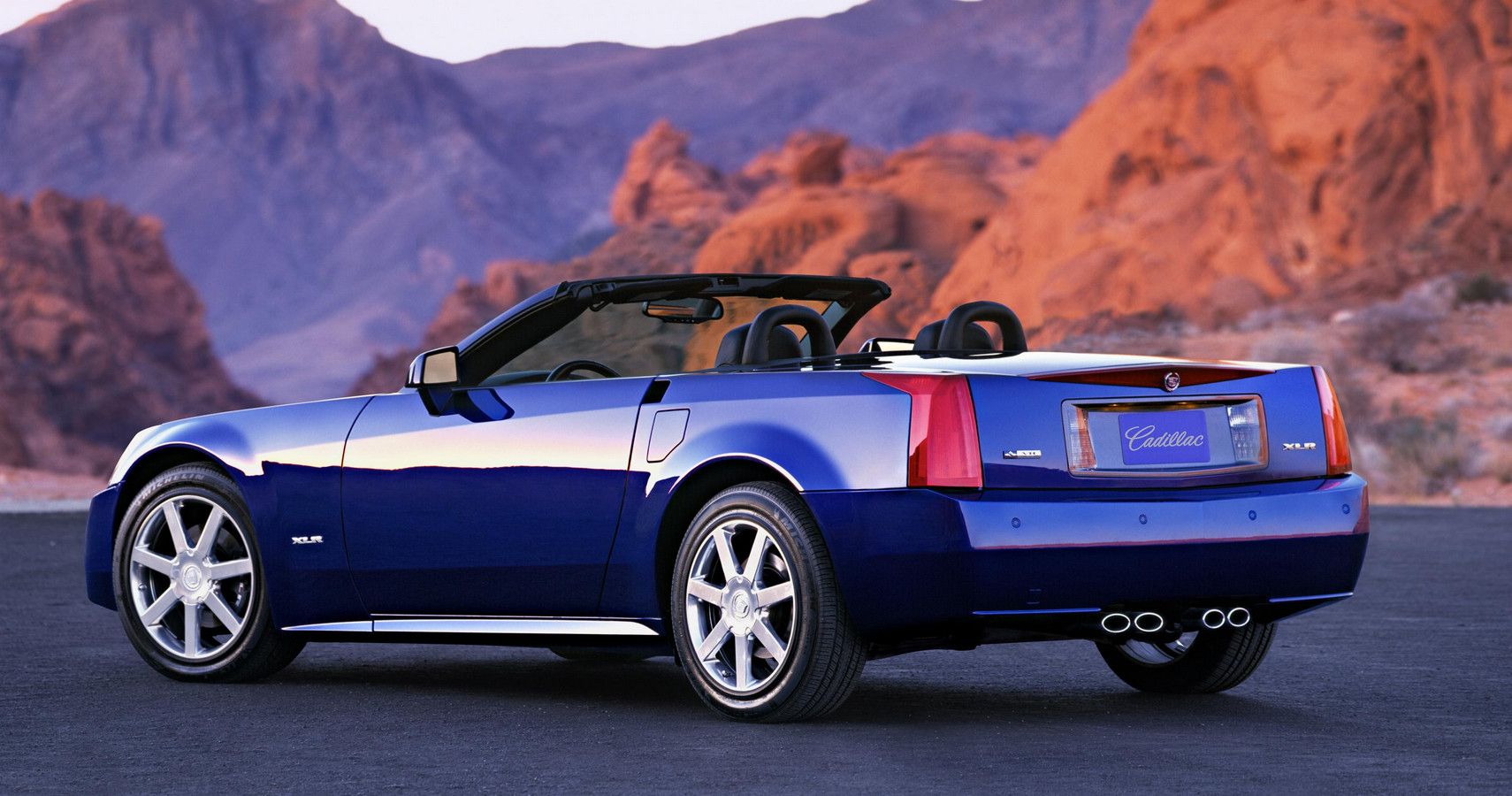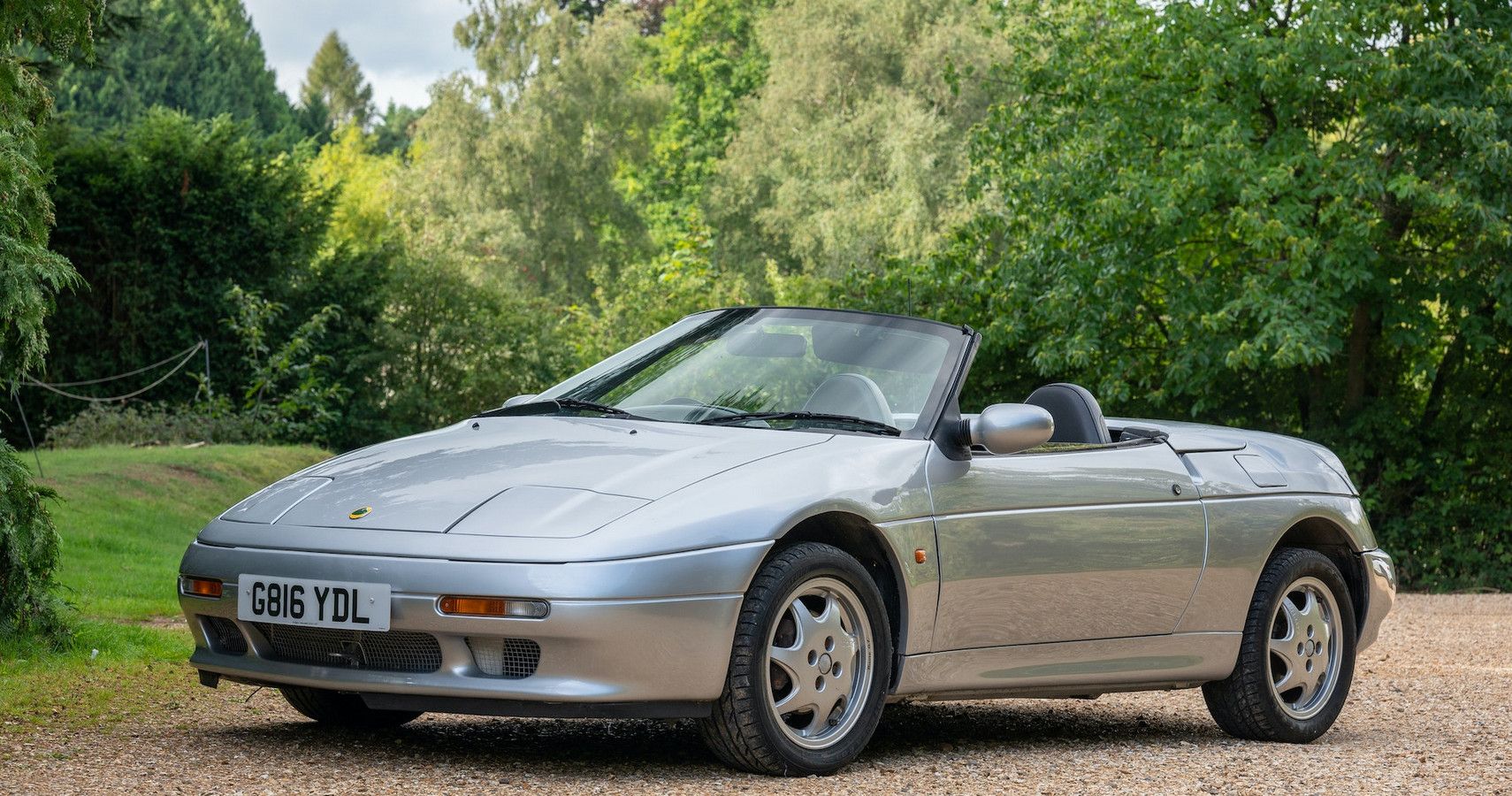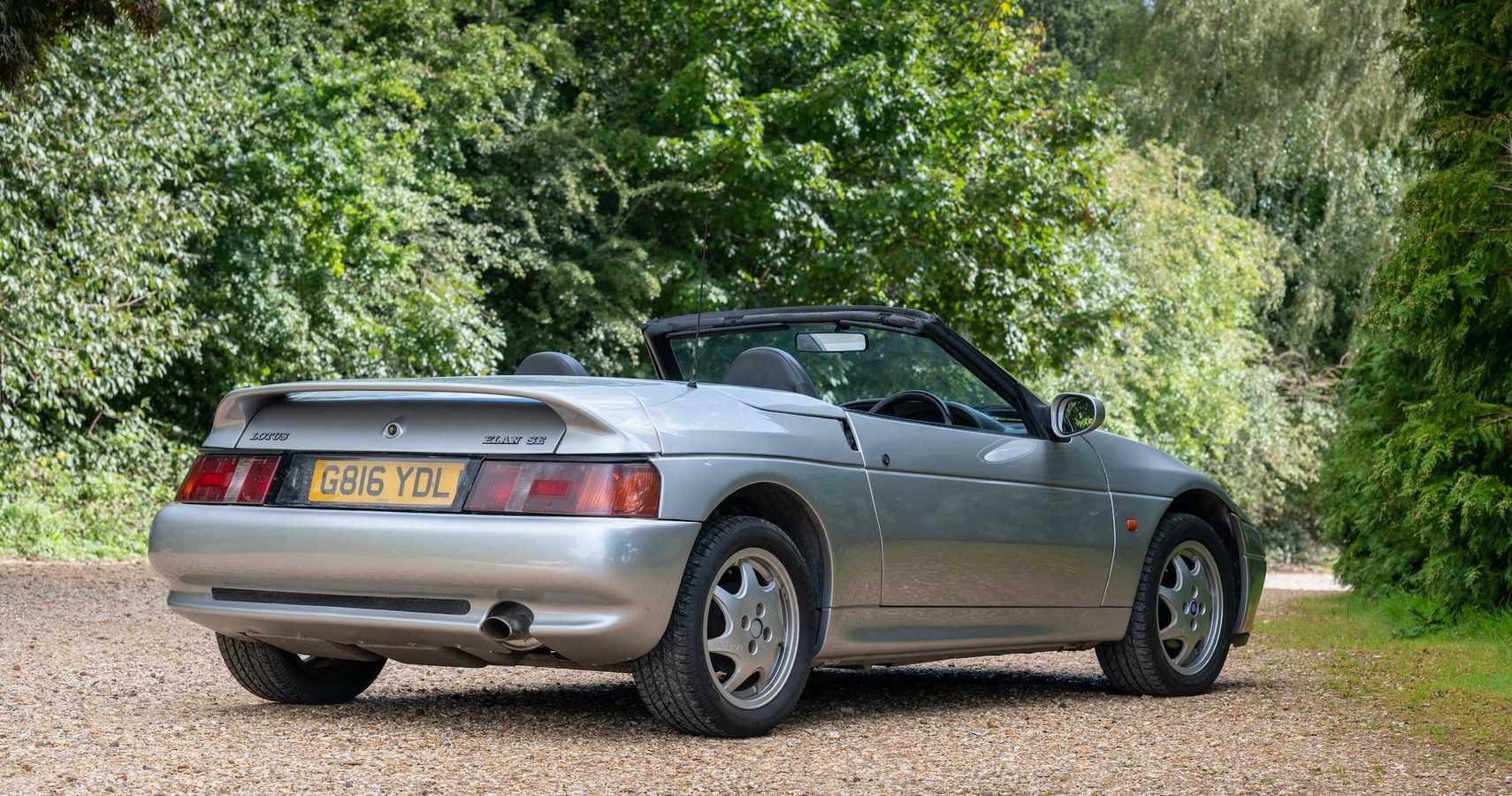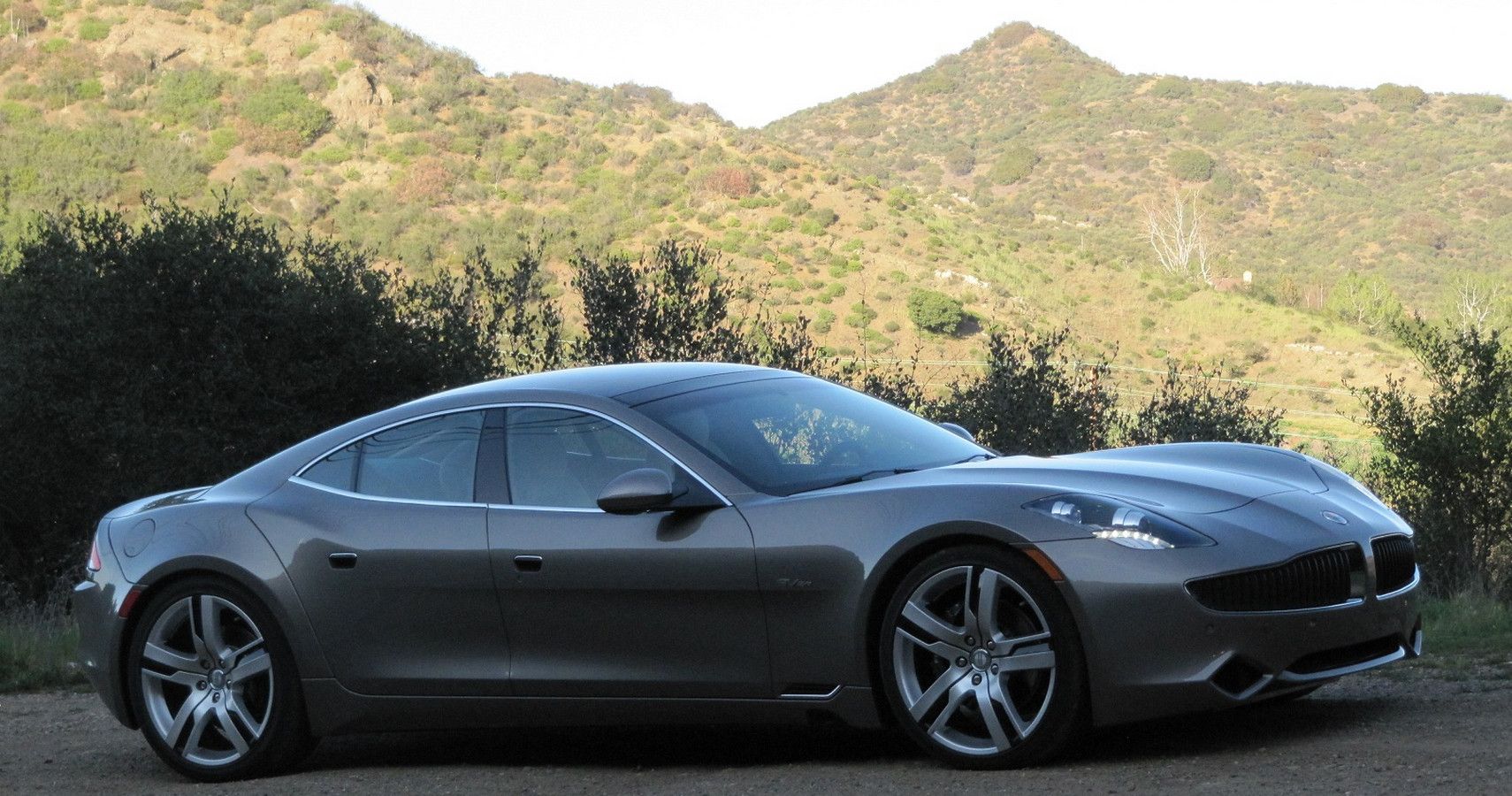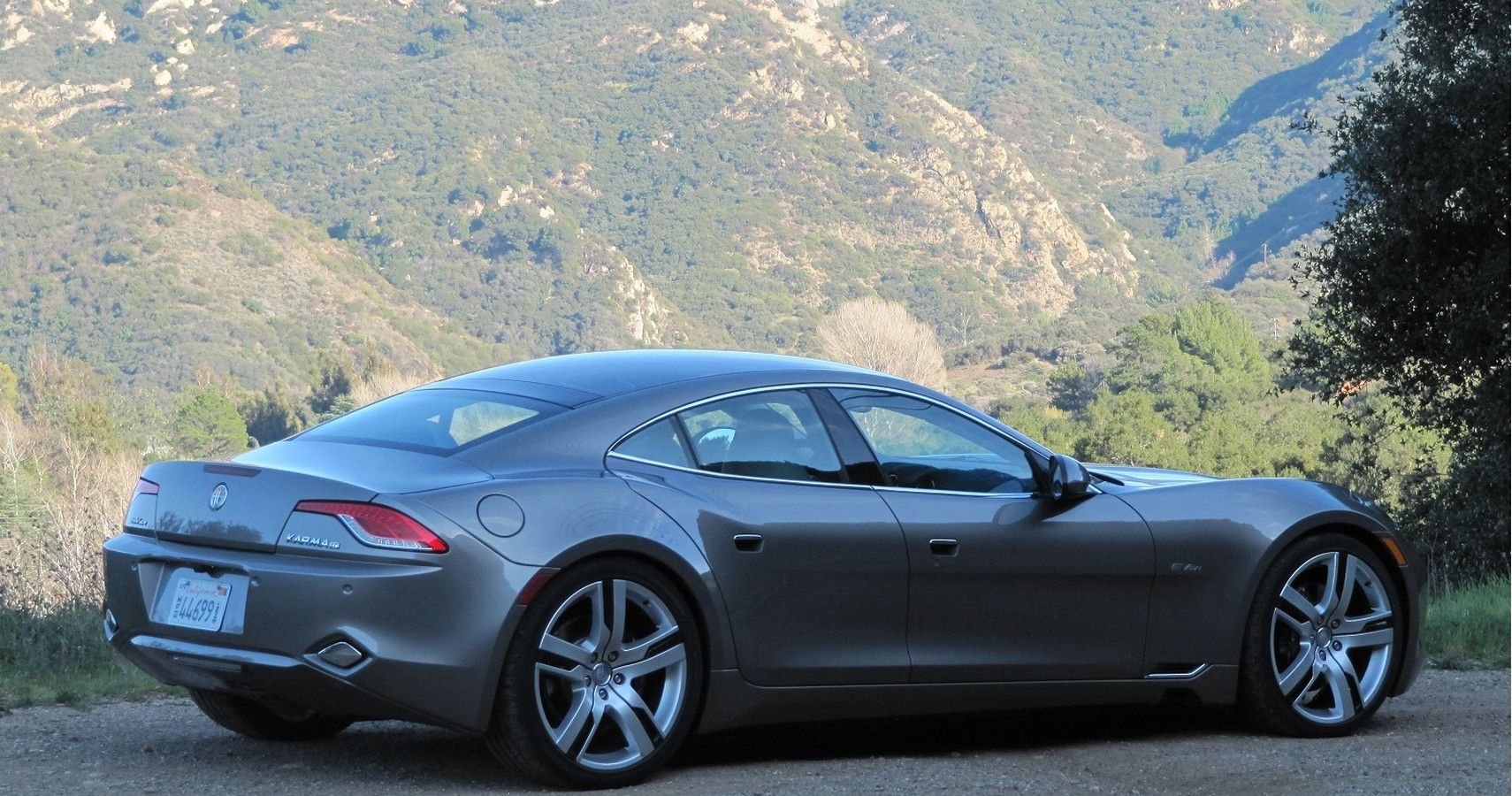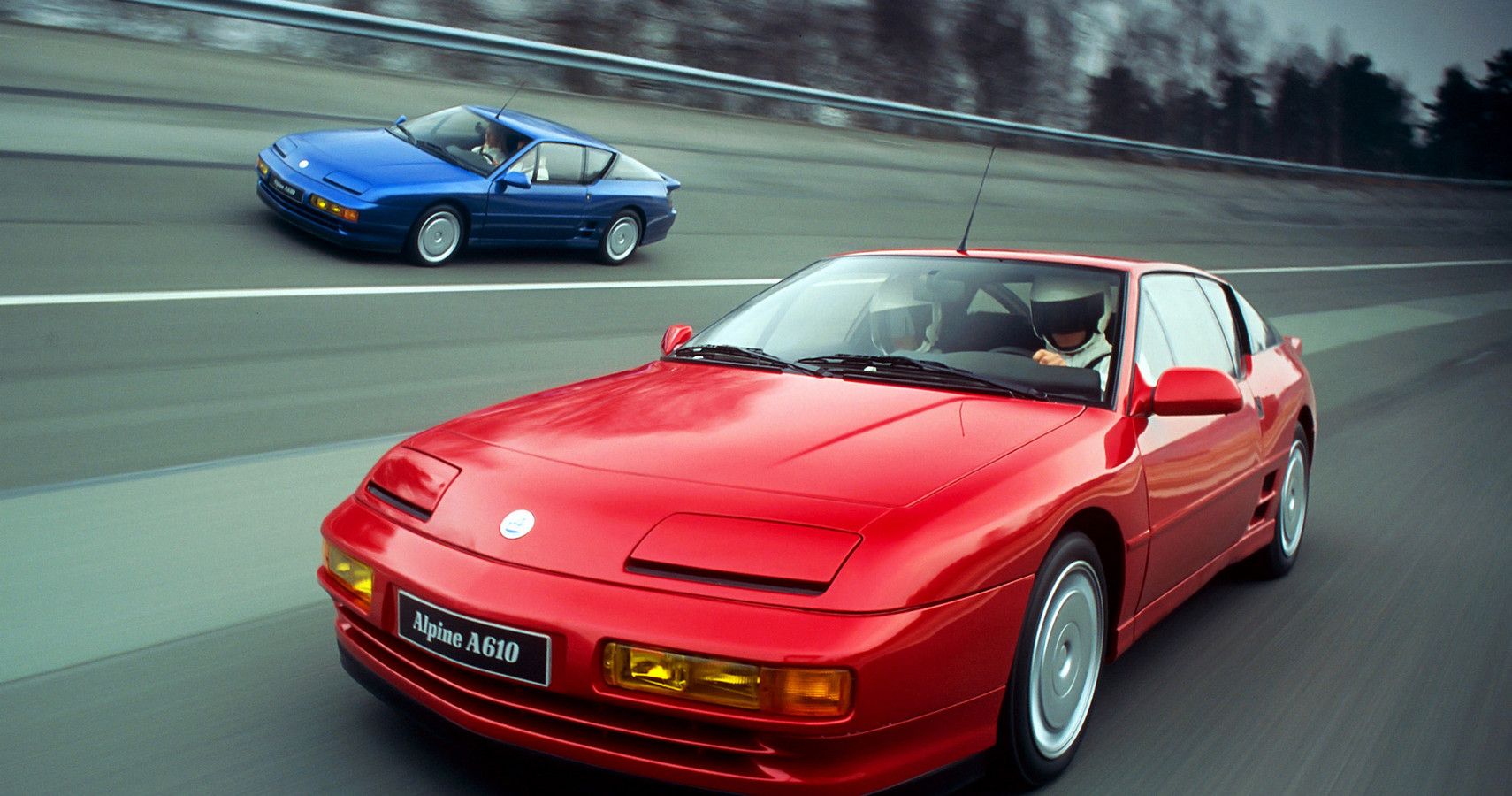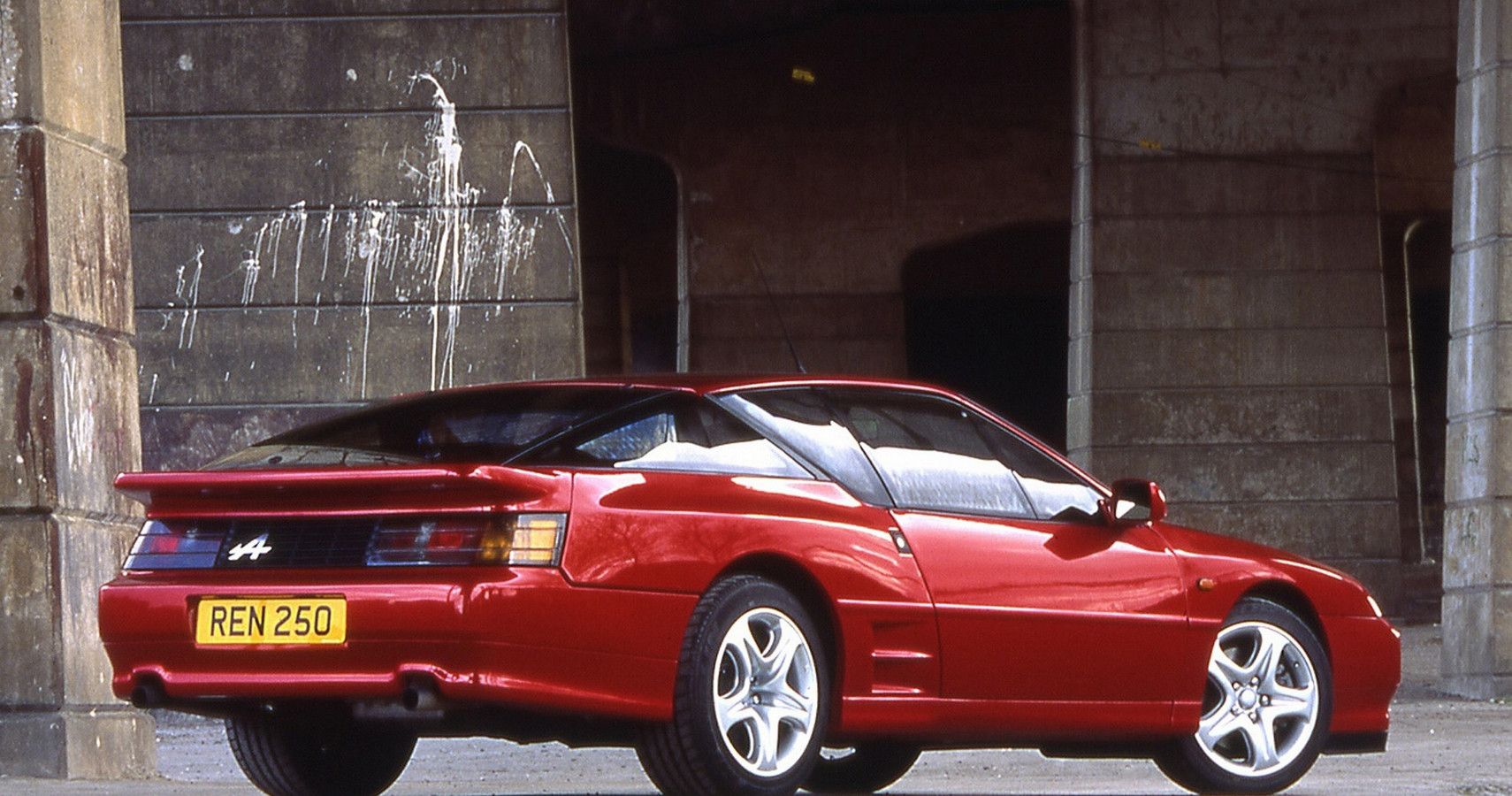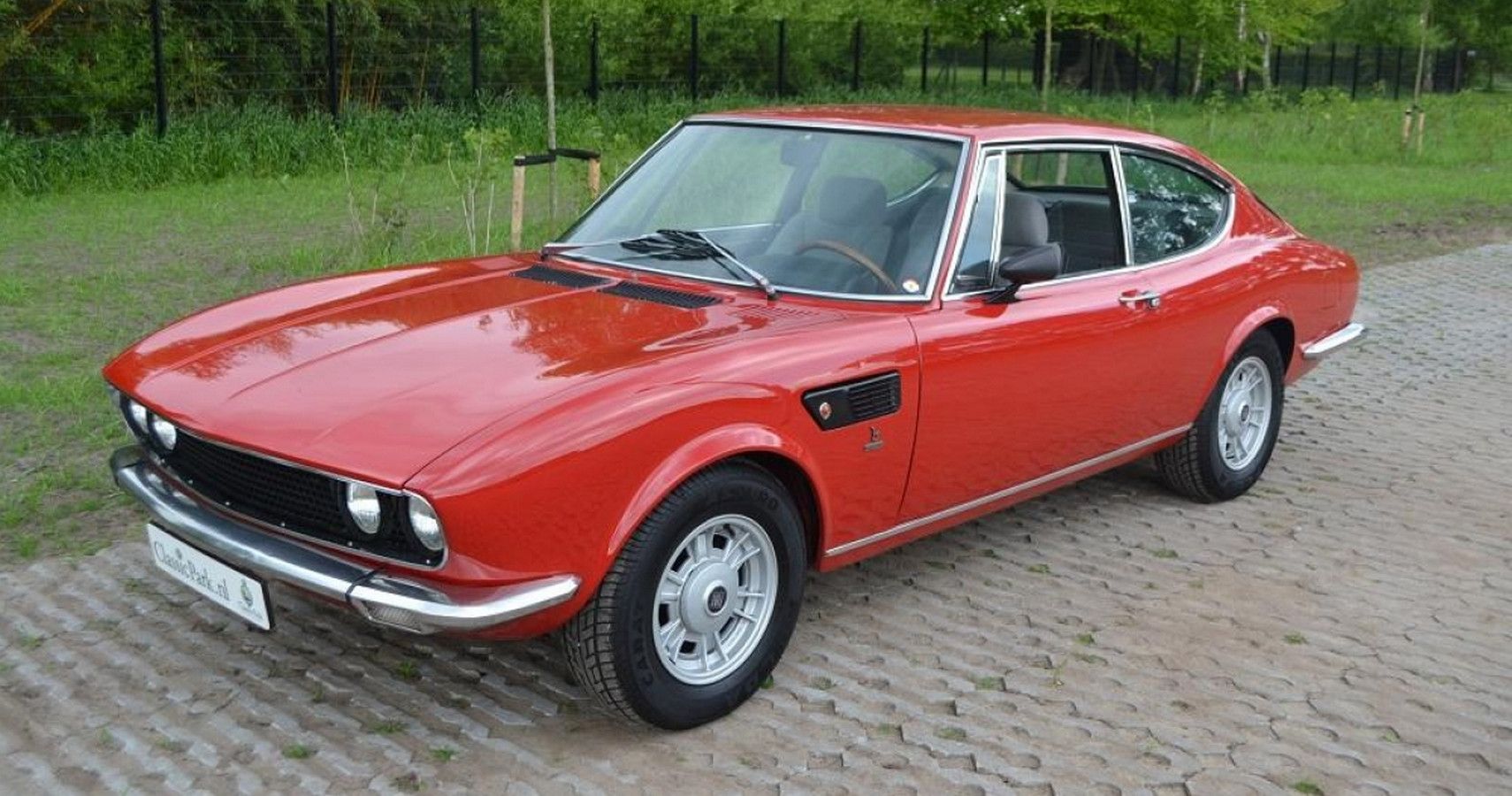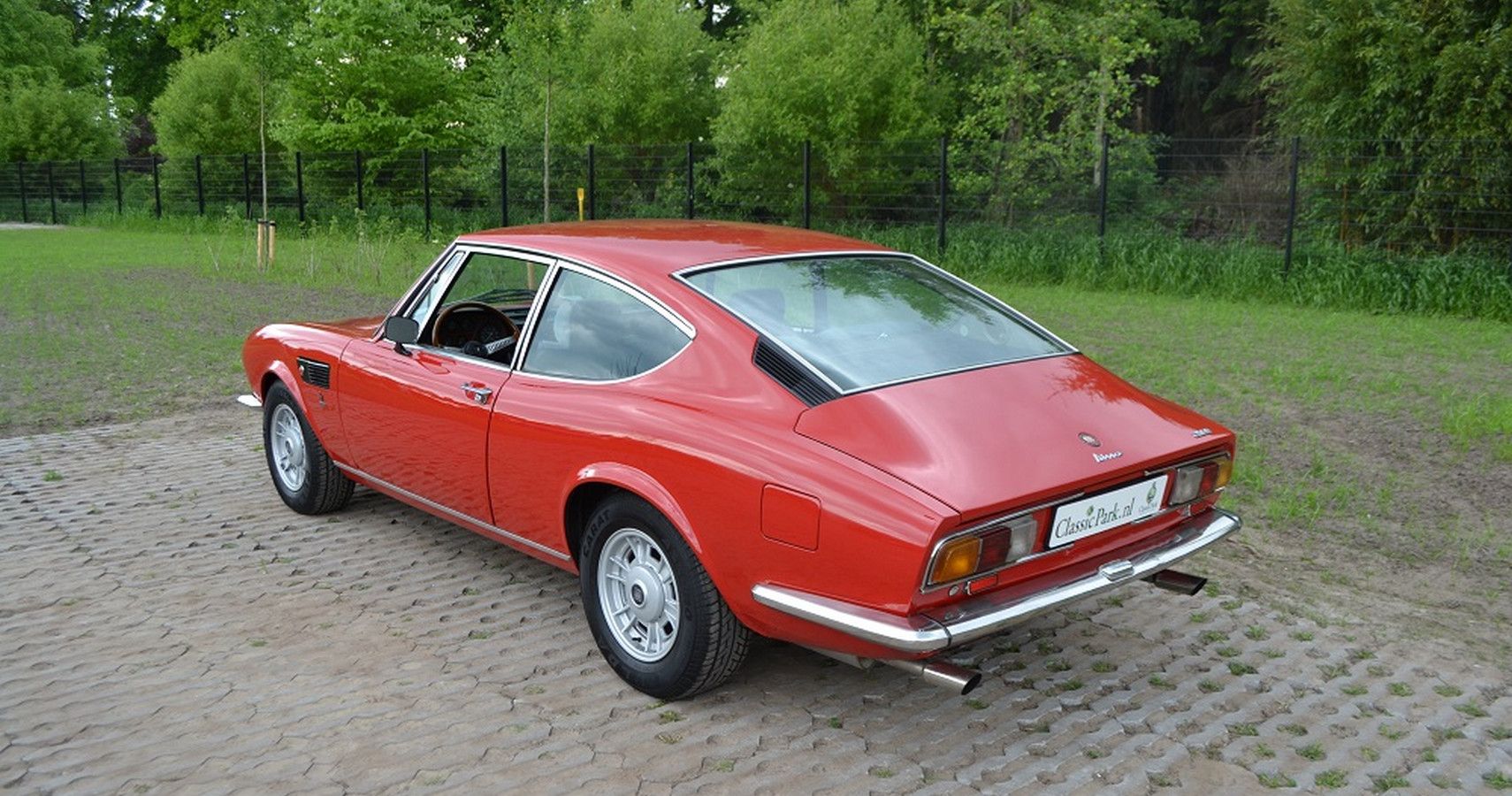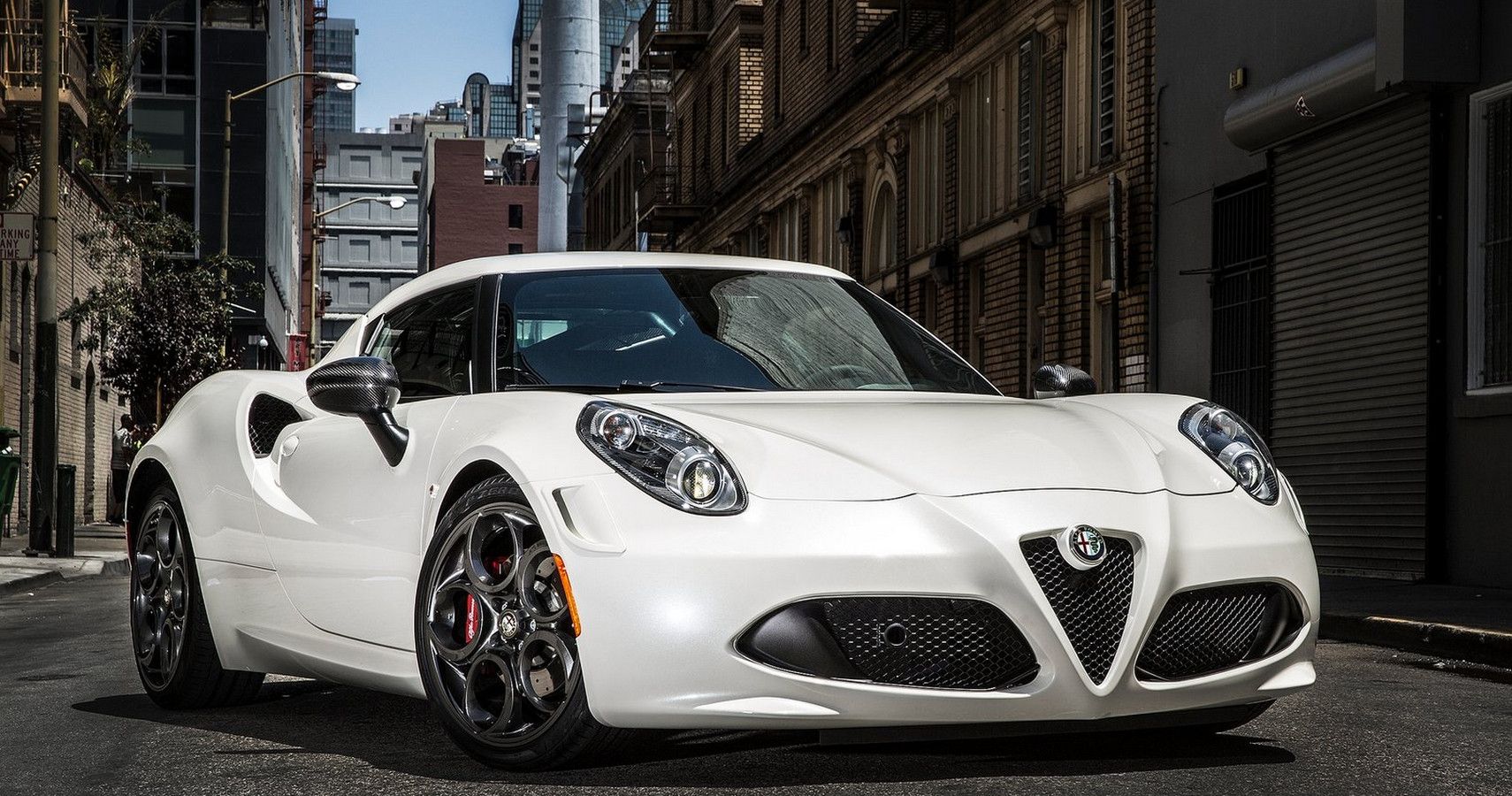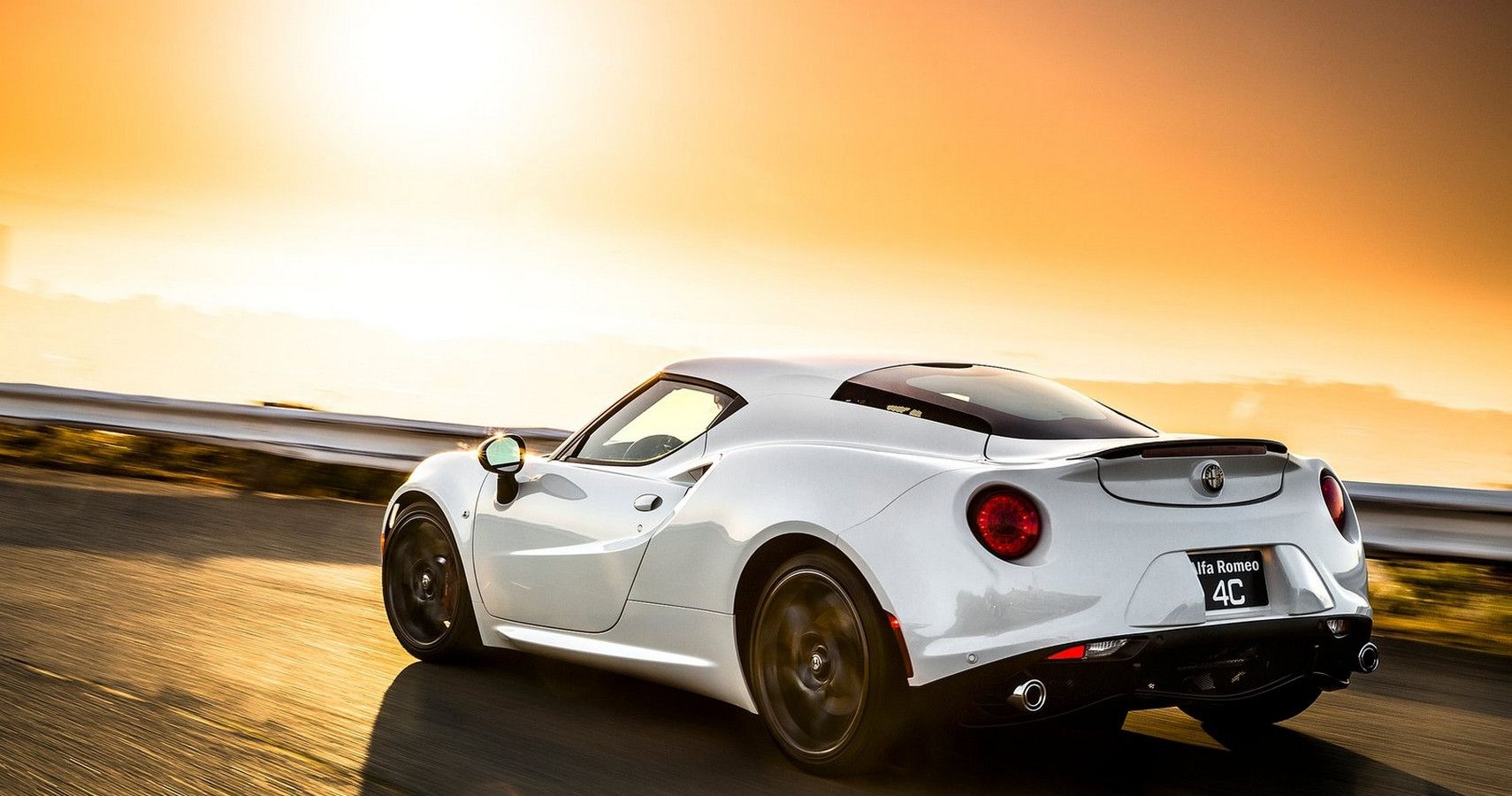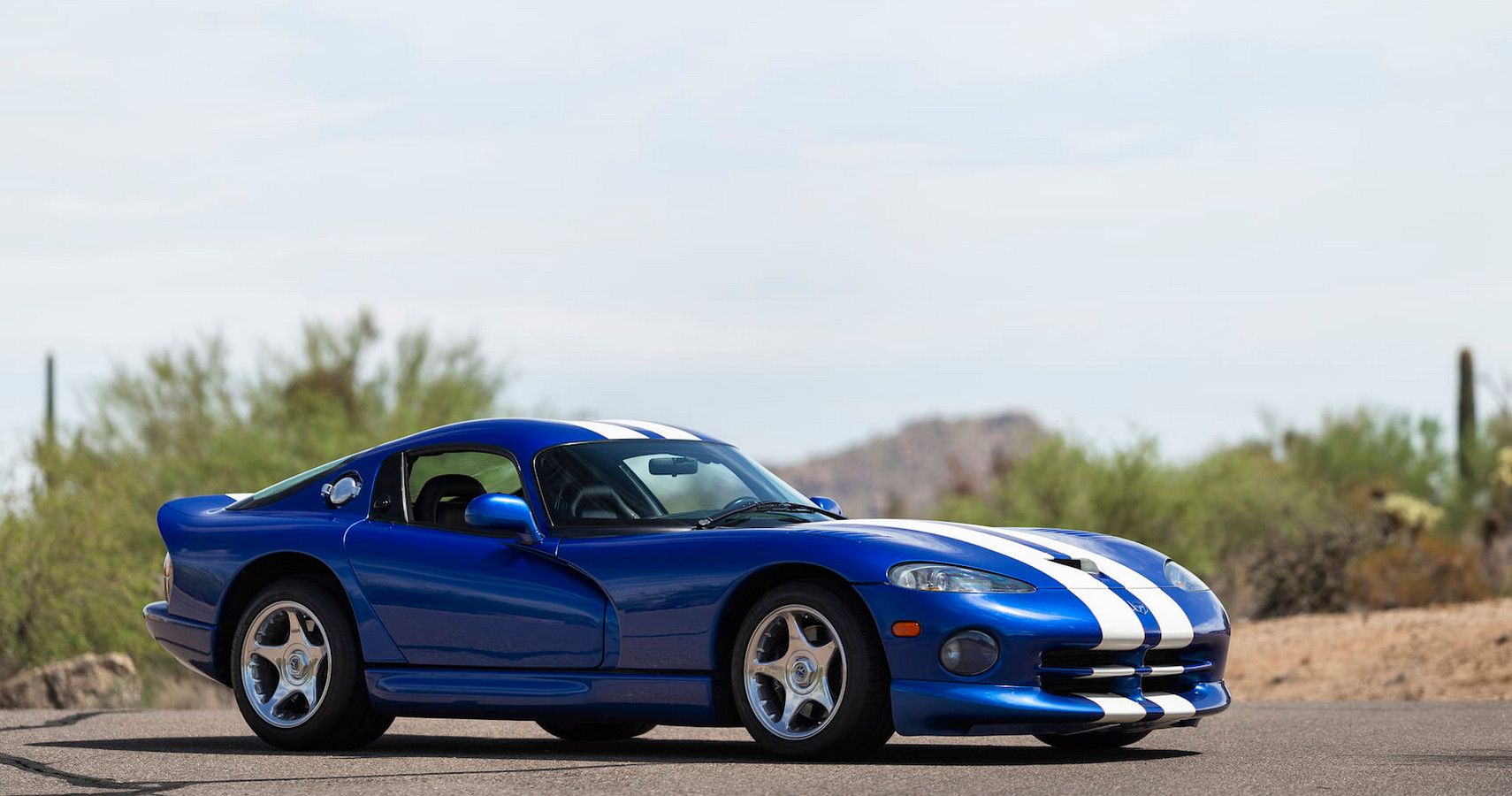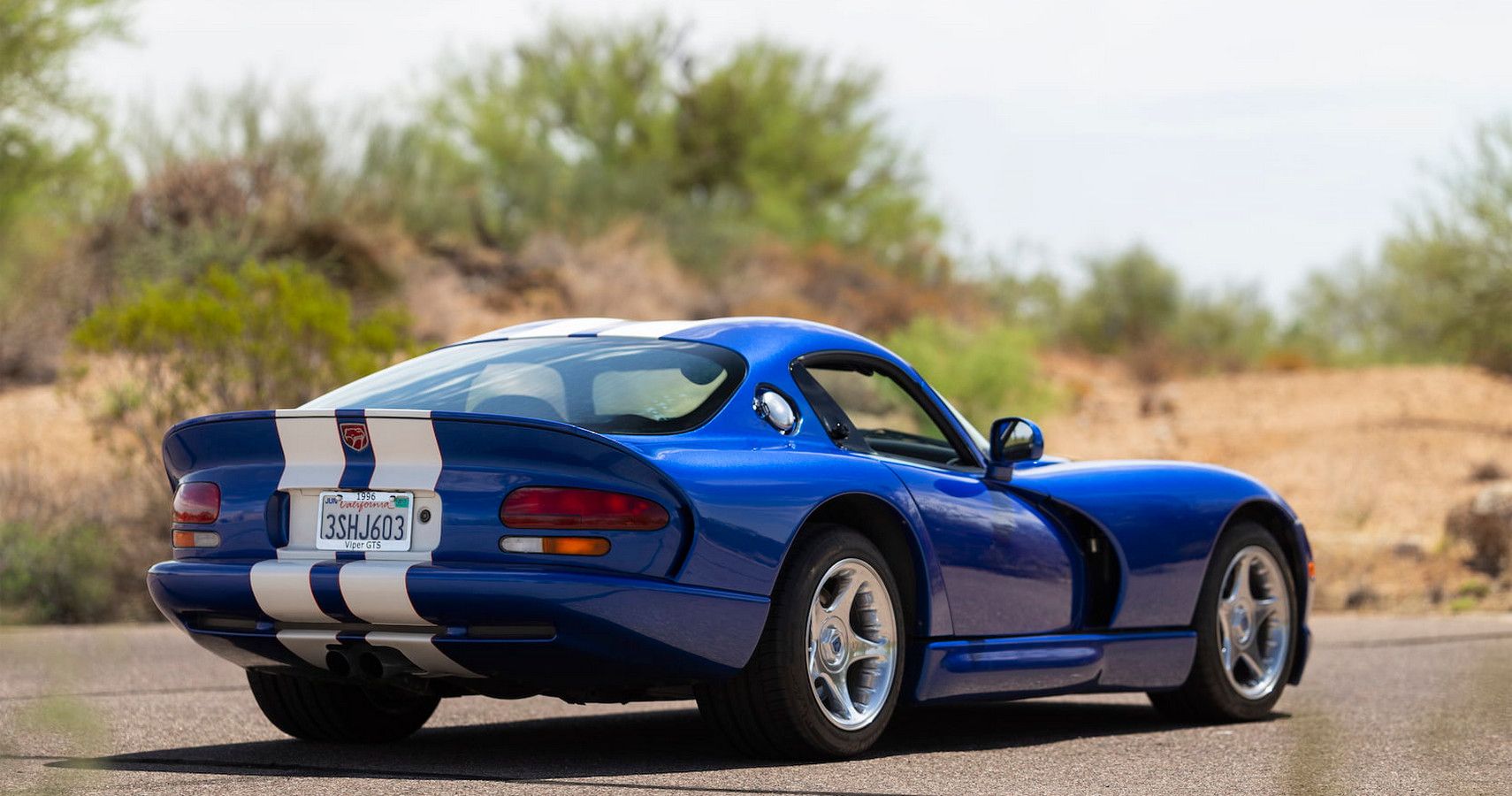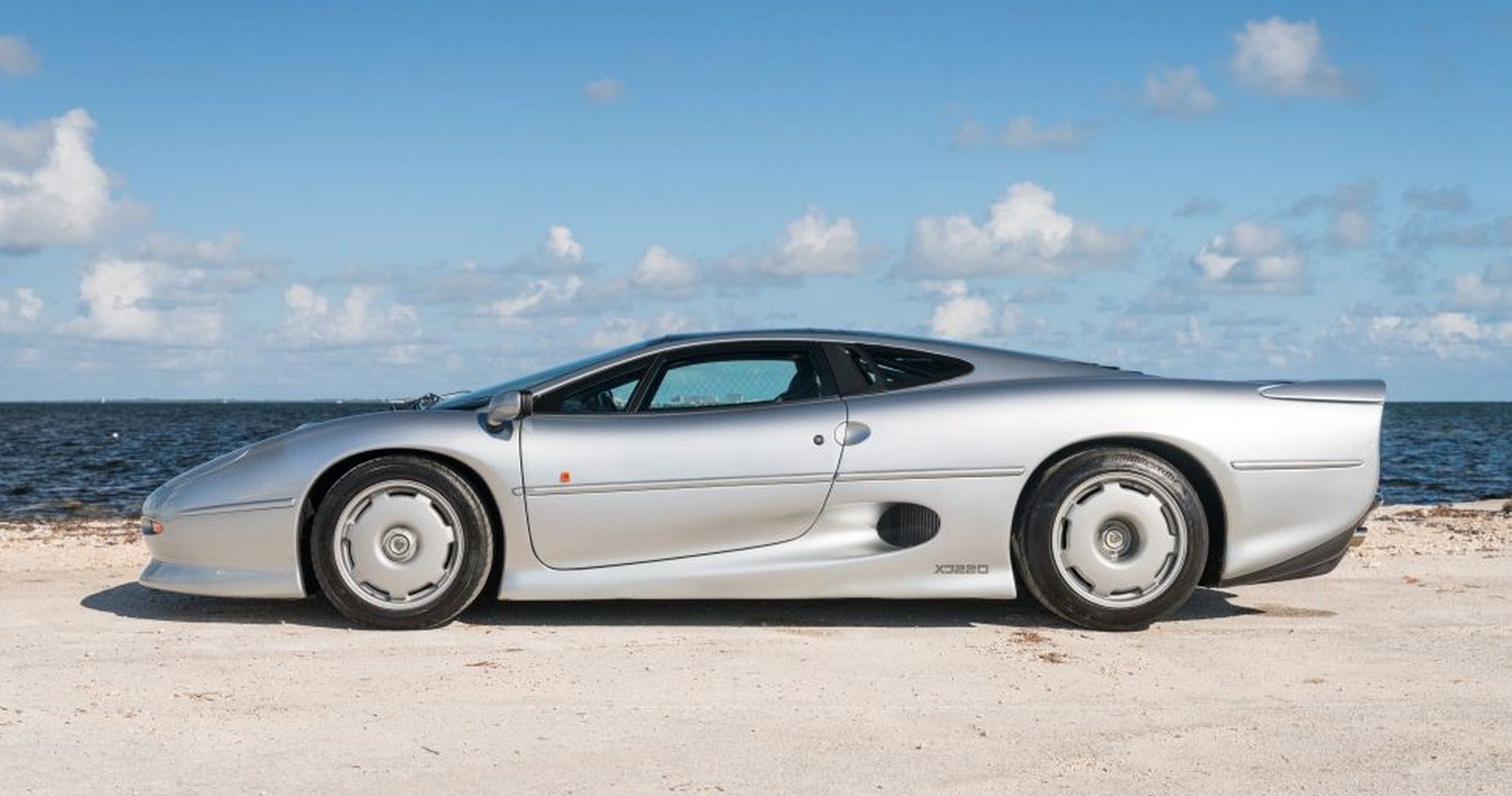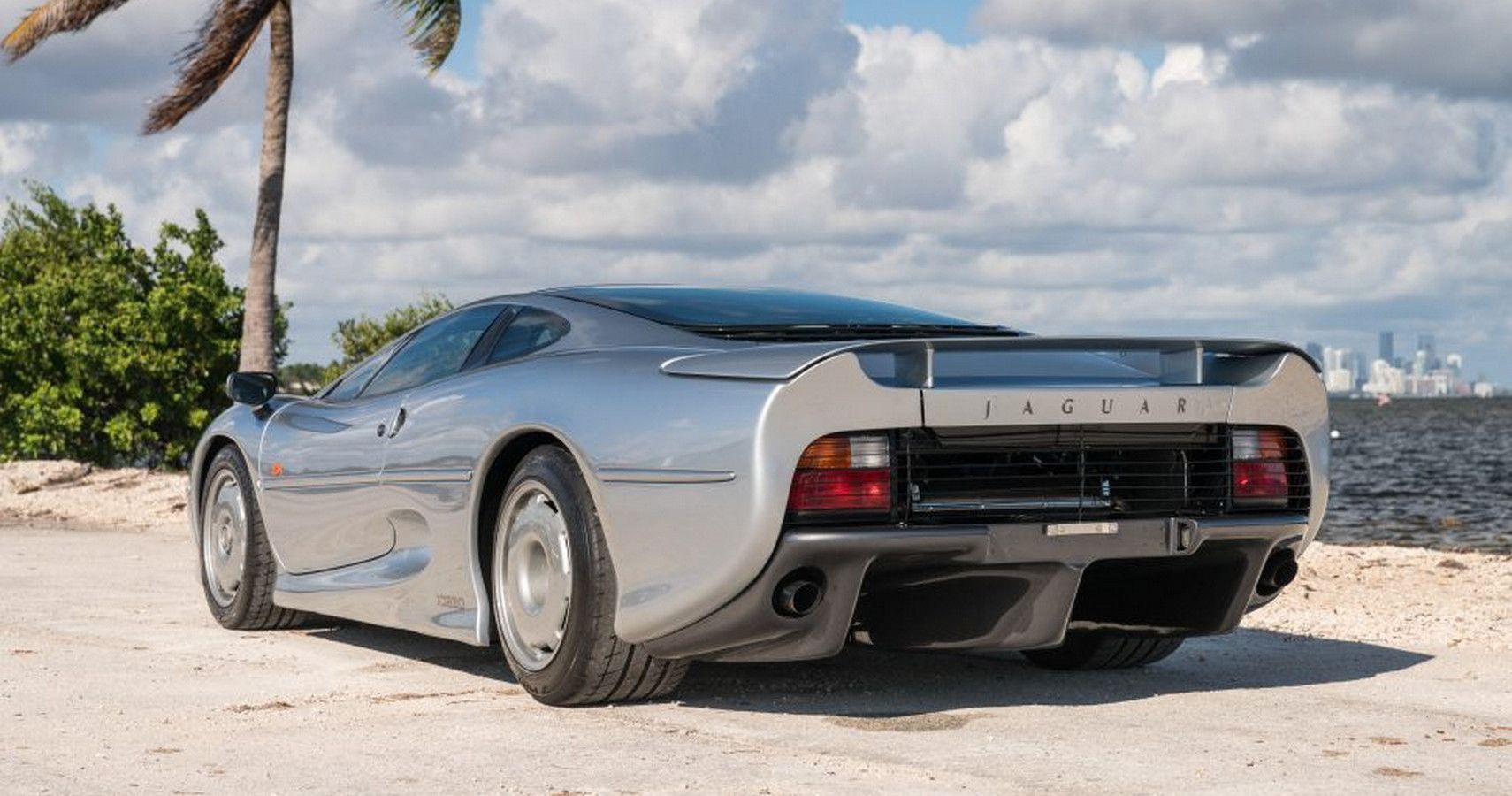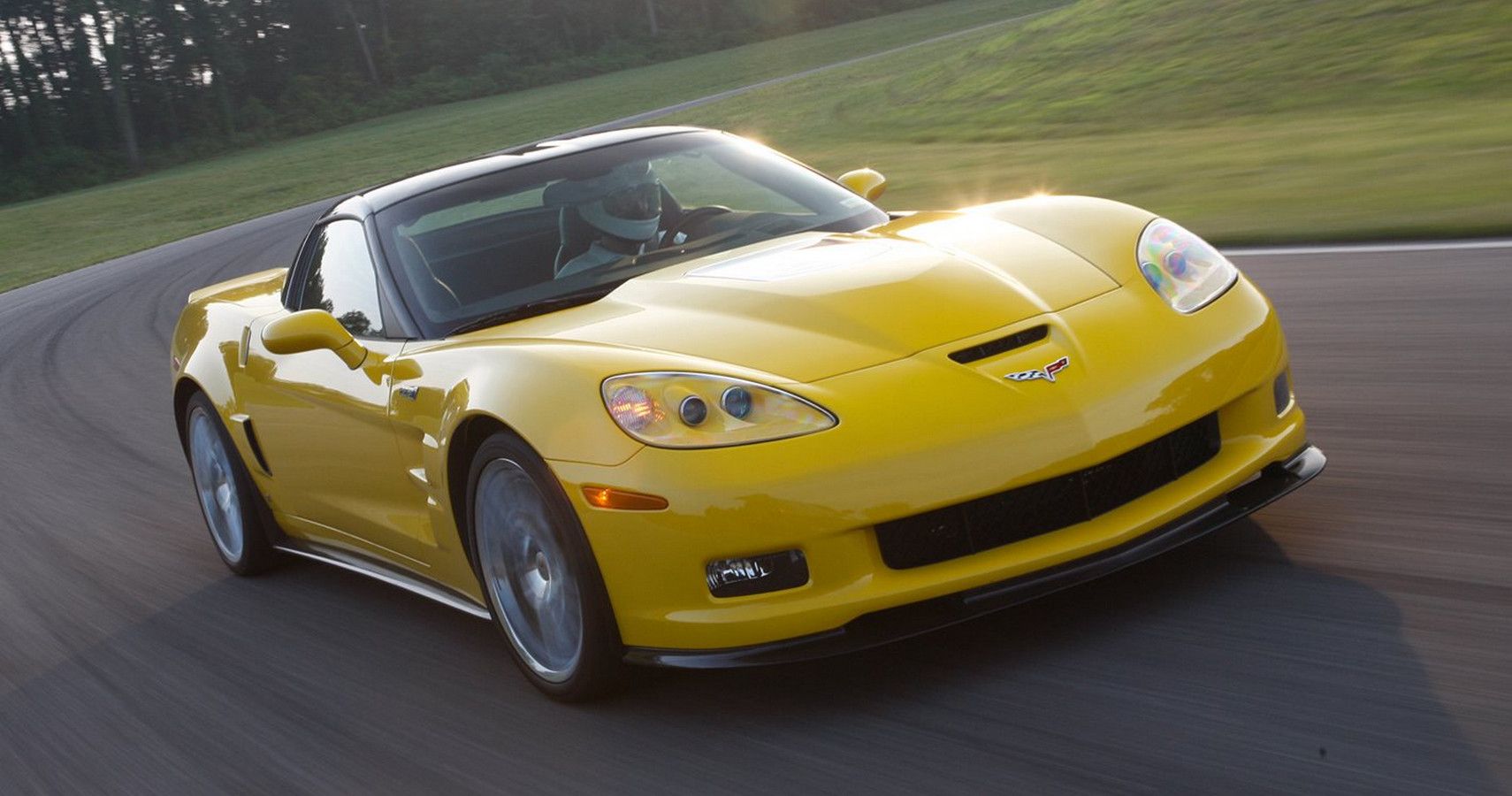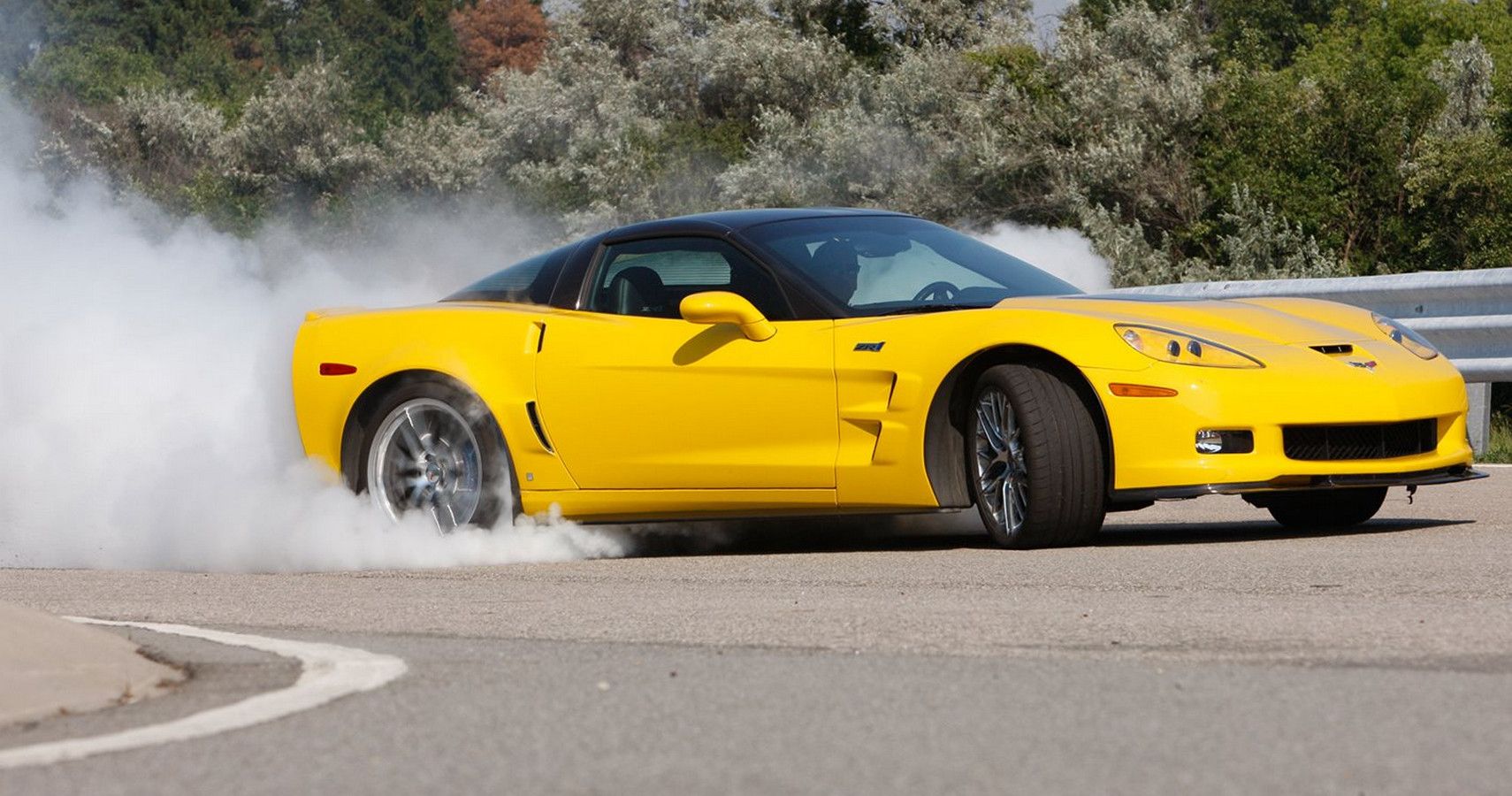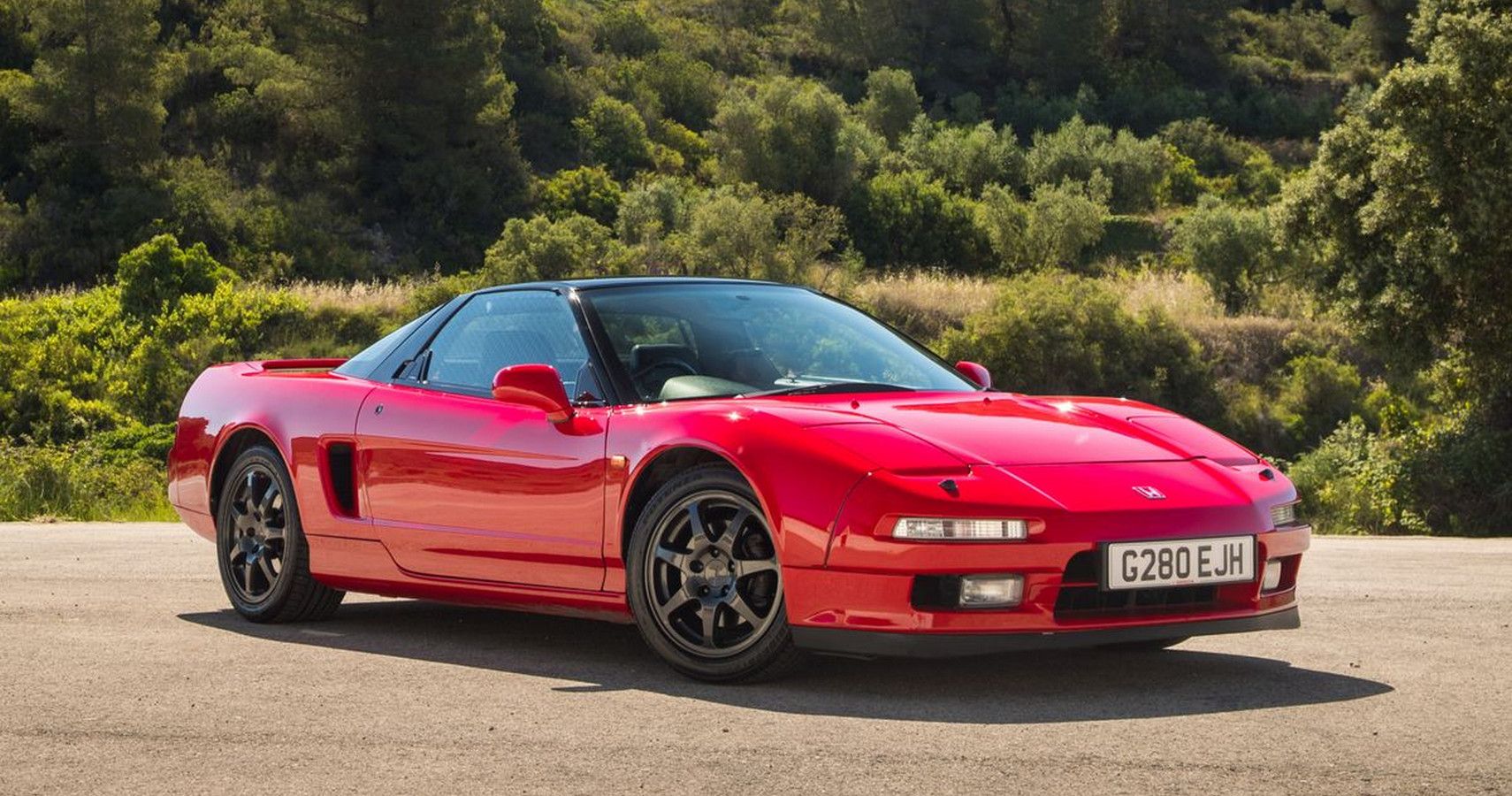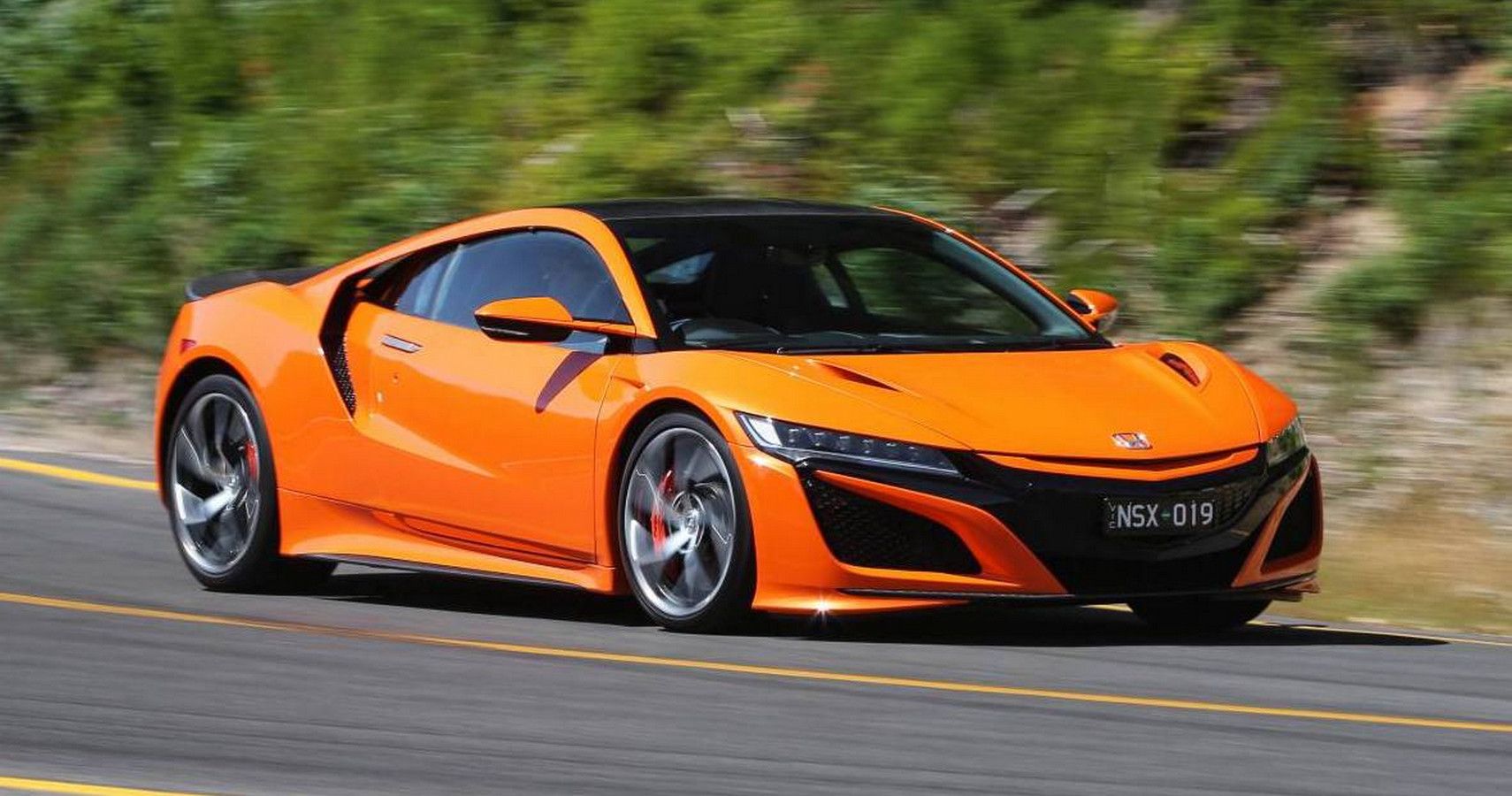Great sports cars are created with the very best equipment that current technology permits, but this is no guarantee that they will sell in the numbers they deserve.
Mankind sits at the top of the evolutionary chain, and that creates one of the greatest obstacles every car designer must overcome. Individuality dictates that not every gearhead will agree on what makes a car desirable, the most powerful engines along with the highest top speed are not markers of success, rather it's down to how a car makes us feel.
Taking a look back over the decades these 10 sports cars should've sold way better than they did.
10 Cadillac XLR (2003-09 - 15,460 Cars Sold)
Rarely does a US-built sports car come along from a manufacturer normally associated with luxury sedans, let alone one daring to stand out from the crowd with angular styling. First produced in 2003, the XLR did just that, featuring a raked body giving the impression of a higher and sportier rear end.
At the very least on par with more prestigious offerings from Mercedes, the XLR could reach 60mph in 5.8-seconds and top out at 155mph. Under the hood, Cadillac offered two engine options based on the Northstar series producing up to 443 HP in the V spec model. Originally Cadillac executives anticipated sales of 5,000 cars per year, at its prime the XLR struggled to sell 3,700 units.
9 Lotus Elan SE (1989-96 - 3,855 Cars Sold)
UK-based Lotus Cars has a long-troubled financial history, seemingly never far from bankruptcy and ownership changes, adding to the brand's uncertainty, and yet its designers still produce some of the greatest sports cars ever. Reviving the Elan name in 1989 raised hopes for the brand's future, except the new sports car wasn't all it seemed to be.
Budget restrictions forced Lotus to adopt a front-wheel-drive layout that would upset the purists, even if the handling lived up to the company's expectations. Early media reviews boosted sales for the first year, but it didn't last. The Elan, although good to drive, was more expensive to build than its rival, Mazda's legendary MX-5.
8 Fisker Karma (2011-12 - 2,450 Cars Sold)
Envisaged as a luxury hybrid sports sedan, the Fisker Karma first hit the market in 2011, promising to be a viable high-performance car with an environmentally friendly PHEV drive train. The carmaker survived just one year, the Karma wasn't a bad car, it just promised more than it could deliver.
At the time, hybrid technology was still a young technology and need development, the Karma, using a 2-liter gas engine combined with twin-electric motors, produced a combined 402 HP and promised a sub-six second sprint to 60mph. A victim of bold environmental claims the Karma barely managed to deliver 24 mpg.
7 Alpine A610 (1991-95 - 818 Cars Sold)
Anything Germany can do Alpine can match. The A610 was launched in 1991, adopting a rear-engine layout like the 911, only using a turbocharged V6 instead of the flat-six configuration. And here lies part of the problem for Alpine. Having mastered the tricky rear-engine handling issues, the A610 never enjoyed the same levels of success.
Evolved from the previous GTA, Alpine fitted the A610 with a 3-liter turbocharged engine boosting output to 250 HP, in the process bestowing keen drivers with a proper sports car capable of a 165 mph top speed.
6 Fiat Dino Coupe (1966-73 - 5,774 Cars Sold)
Enzo Ferrari begrudgingly only produced road cars to fund his racing team. Needing to meet homologation regulations for the company's V6 racing engine resulted in the Fiat Dino Coupe.
Unsurprisingly, a Bertone-styled coupe fitted with the Dino V6 engine, built alongside the famous Ferrari Dino at Maranello would be too good an opportunity to pass up. The Coupe was good publicity for Fiat. Specification changes for 1969 heralded the arrival of larger 2.4-liter units rated at 178 HP, but ultimately production capacity prevented the Dino from becoming the sales success it deserved.
5 Alfa Romeo 4C (2013-18 - 14,000 Estimated)
The announcement of Alfa Romeo's 4C coupe in 2013 marked the return of the famous Italian carmaker to both the sports car sector, and more importantly, a return to the North American market. Initially, planned production would call for 3,500 cars per year, with around a third earmarked for eager US customers.
After a brief five-year production life, the 4C Coupe was dropped from production, the carbon-fiber-based two-seater failing to find buyers, with pricing being the major cause of poor sales. Despite the turbocharged 1.75-liter engine delivering impressive performance figures, 60mph taking 4.8-seconds, the Coupe only shifted an estimated 14,000 cars.
4 Dodge Viper (1991-2017 - 31,850 Cars Sold)
When the Viper first appeared in showrooms, Dodge made no excuses for the basic simplicity of what was at the time a basic sports car with little or no attempt to be practical. Instead, Dodge gave gearheads what they really wanted, a powerful sports car that didn't pretend to be anything else.
Even now, the Viper ranks highly, having one of the largest engines ever fitted to a production car, a truck-sourced 8.4-liter V10 engine producing up to 645 HP in the ACR. During a 25-year production run, some concessions to practicality were made, but the Viper's intimidating reputation prevented it from becoming a huge success.
3 Jaguar XJ220 (1992-94 - 275 Cars Sold)
Jaguar's XJ220 is proof that concept cars never tell the whole story, the original show car boasted a race-derived V12 engine and sophisticated all-wheel-drive system. The initial reaction enticed Jaguar to produce a limited run of 350 cars, many potential owners handing over deposits on the sight of the prototype.
Needless to say, by the time Jaguar actually produced any XJ220s, the production model used a smaller V6 engine and featured rear-wheel-drive only, the lure of bleeding-edge technology deflated customers, many of whom canceled their orders. In terms of performance, the XJ220 proved successful, claiming the record of the fastest production car. However, sales flopped and Jaguar halted production after 275 cars were built.
2 Chevrolet Corvette ZR-1 (2009-13 - 4,684 Cars Sold)
Chevrolet's most popular sports car reached its sixth generation in 2005 and would be closely followed by the ZR-1, the ultimate performance Vette. Launched in 2009, the ZR1 with a new LS9 supercharged V8 engine finally achieved GM's goal of exceeding 100 HP per liter, with a total output of 638 HP, resulting in a top speed of over 200mph.
Despite the impressive performance figures, the ZR-1 only remained in production until 2013, with a mere 4,684 cars produced. The ultimate Corvette faced competition from other models in the range, all of which had decent performance.
1 Acura NSX (1990-2005 And 2016-20 - 18,685 And 2,500 Cars Sold)
A truly groundbreaking sports car when it was introduced in 1989, the NSX set new standards for practicality and usability without the normal reliability associated with supercars. However, despite Honda's best efforts, the NSX only ever sold in low numbers, with just short of 19,000 cars over a 15-year period.
After an absence of 11 years, the NSX was back, a completely new, but somehow evolutionary model launched in 2016, remaining faithful to the original. In what so far appears to be a case of history repeating itself, the current NX faces similar sales challenges, the design and performance are great, but current sales trends are dominated by SUVs.

